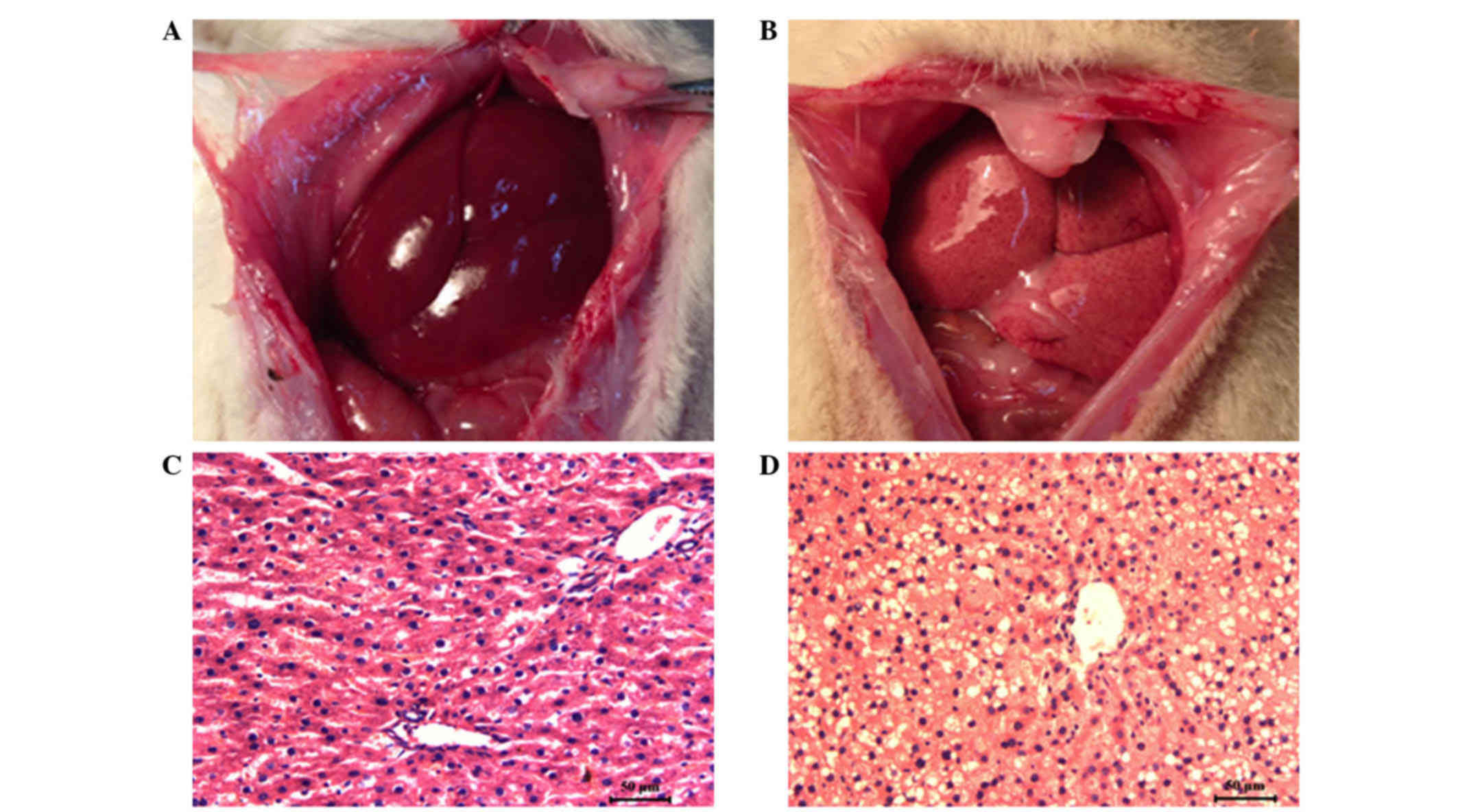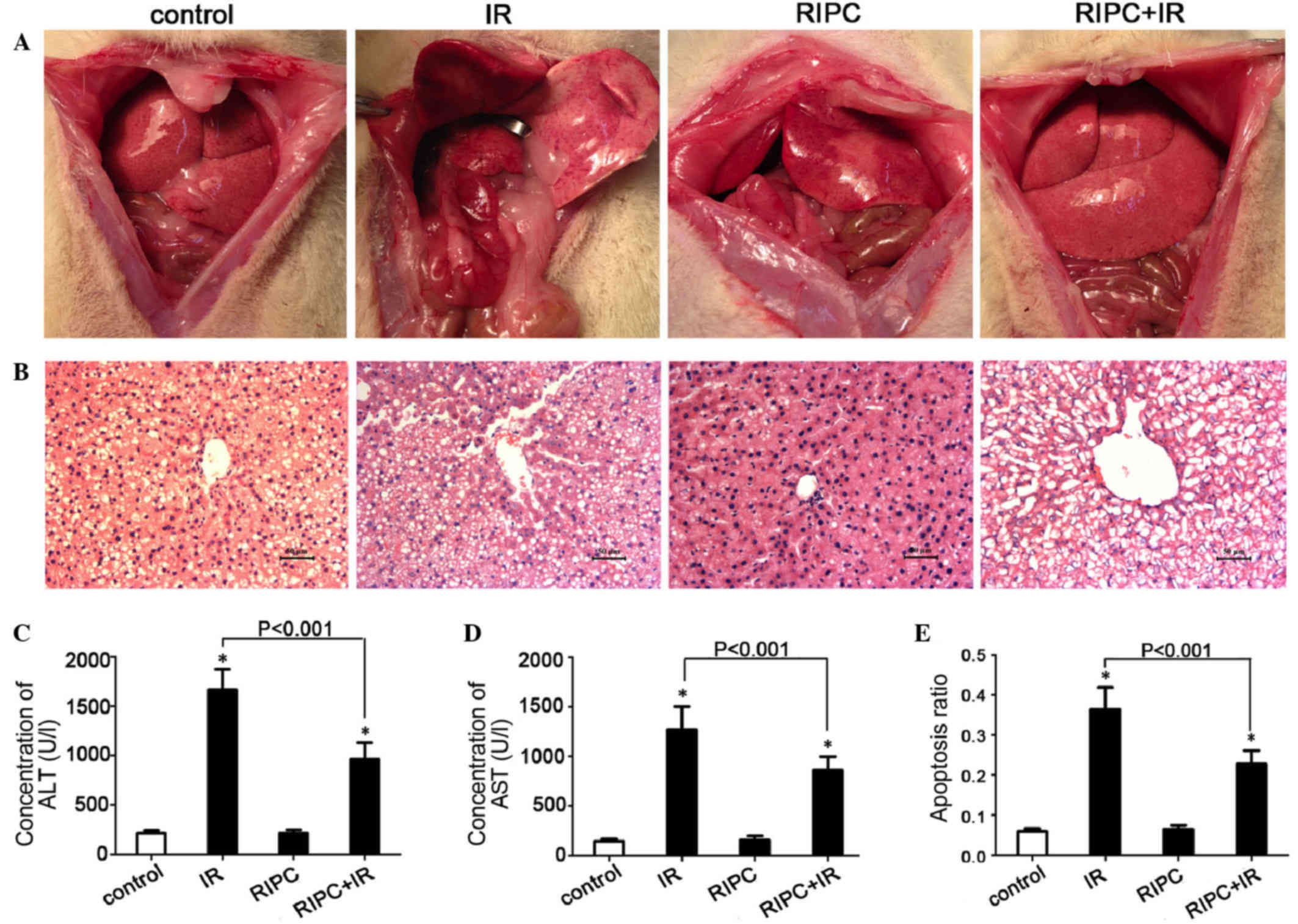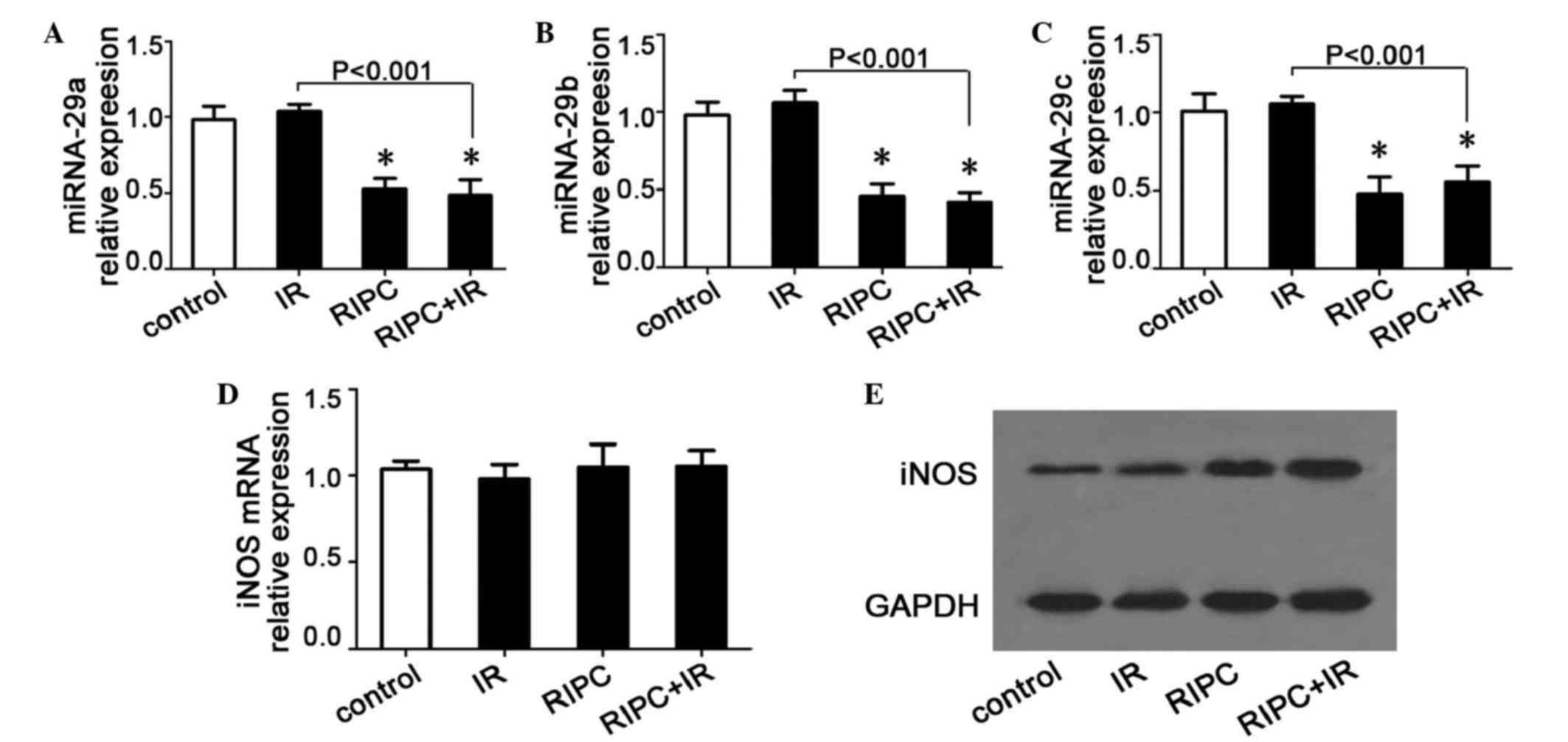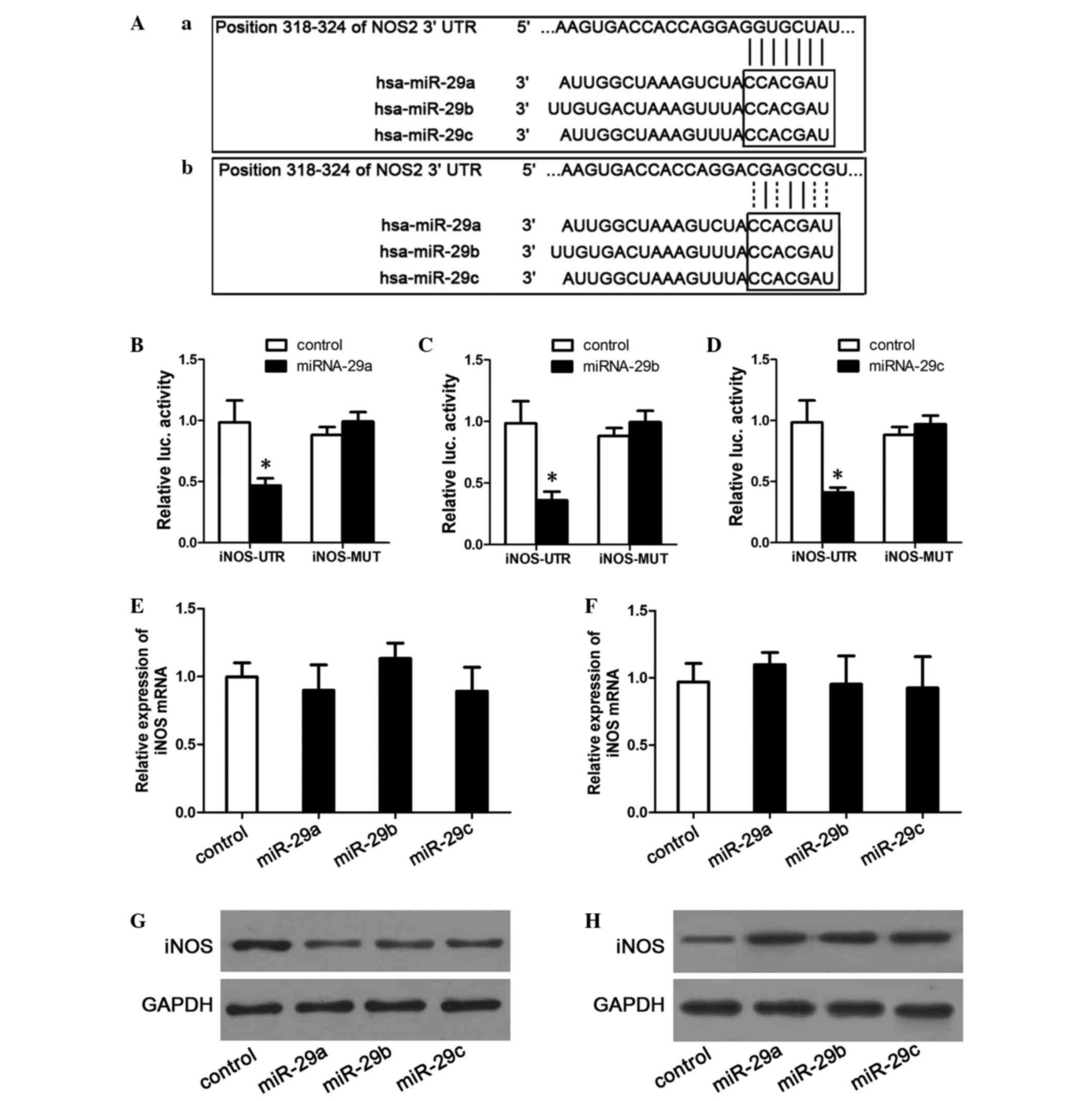|
1
|
Lomonaco R, Sunny NE, Bril F and Cusi K:
Nonalcoholic fatty liver disease: Current issues and novel
treatment approaches. Drugs. 73:1–14. 2013. View Article : Google Scholar : PubMed/NCBI
|
|
2
|
de Meijer VE, Kalish BT, Puder M and
Ijzermans JN: Systematic review and meta-analysis of steatosis as a
risk factor in major hepatic resection. Br J Surg. 97:1331–1339.
2010. View
Article : Google Scholar : PubMed/NCBI
|
|
3
|
Marsman HA, Heger M, Kloek JJ, Nienhuis
SL, ten Kate FJ and van Gulik TM: Omega-3 fatty acids reduce
hepatic steatosis and consequently attenuate ischemia-reperfusion
injury following partial hepatectomy in rats. Dig Liver Dis.
43:984–990. 2011. View Article : Google Scholar : PubMed/NCBI
|
|
4
|
Song X, Xu H, Feng Y, Li X, Lin M and Cao
L: Protective effect of grape seed proanthocyanidins against liver
ischemic reperfusion injury: Particularly in diet-induced obese
mice. Int J Biol Sci. 8:1345–1362. 2012. View Article : Google Scholar : PubMed/NCBI
|
|
5
|
Gassanov N, Nia AM, Caglayan E and Er F:
Remote ischemic preconditioning and renoprotection: From myth to a
novel therapeutic option. J Am Soc Nephrol. 25:216–224. 2014.
View Article : Google Scholar : PubMed/NCBI
|
|
6
|
Manchurov V, Ryazankina N, Khmara T,
Skrypnik D, Reztsov R, Vasilieva E and Shpektor A: Remote ischemic
preconditioning and endothelial function in patients with acute
myocardial infarction and primary PCI. Am J Med. 127:670–673. 2014.
View Article : Google Scholar : PubMed/NCBI
|
|
7
|
Schmidt MR, Støttrup NB, Michelsen MM,
Contractor H, Sørensen KE, Kharbanda RK, Redington AN and Bøtker
HE: Remote ischemic preconditioning impairs ventricular function
and increases infarct size after prolonged ischemia in the isolated
neonatal rabbit heart. J Thorac Cardiovasc Surg. 147:1049–1055.
2014. View Article : Google Scholar : PubMed/NCBI
|
|
8
|
Crimi G, Pica S, Raineri C, Bramucci E, De
Ferrari GM, Klersy C, Ferlini M, Marinoni B, Repetto A, Romeo M, et
al: Remote ischemic post-conditioning of the lower limb during
primary percutaneous coronary intervention safely reduces enzymatic
infarct size in anterior myocardial infarction: A randomized
controlled trial. JACC Cardiovasc Interv. 6:1055–1063. 2013.
View Article : Google Scholar : PubMed/NCBI
|
|
9
|
Cai ZP, Parajuli N, Zheng X and Becker L:
Remote ischemic preconditioning confers late protection against
myocardial ischemia-reperfusion injury in mice by upregulating
interleukin-10. Basic Res Cardiol. 107:2772012. View Article : Google Scholar : PubMed/NCBI
|
|
10
|
Wever KE, Warlé MC, Wagener FA, van der
Hoorn JW, Masereeuw R, van der Vliet JA and Rongen GA: Remote
ischaemic preconditioning by brief hind limb ischaemia protects
against renal ischaemia-reperfusion injury: The role of adenosine.
Nephrol Dial Transplant. 26:3108–3117. 2011. View Article : Google Scholar : PubMed/NCBI
|
|
11
|
Dong HL, Zhang Y, Su BX, Zhu ZH, Gu QH,
Sang HF and Xiong L: Limb remote ischemic preconditioning protects
the spinal cord from ischemia-reperfusion injury: A newly
identified nonneuronal but reactive oxygen species-dependent
pathway. Anesthesiology. 112:881–891. 2010. View Article : Google Scholar : PubMed/NCBI
|
|
12
|
Zhou W, Zeng D, Chen R, Liu J, Yang G, Liu
P and Zhou X: Limb ischemic preconditioning reduces heart and lung
injury after an open heart operation in infants. Pediatr Cardiol.
31:22–29. 2010. View Article : Google Scholar : PubMed/NCBI
|
|
13
|
Rentoukas I, Giannopoulos G, Kaoukis A,
Kossyvakis C, Raisakis K, Driva M, Panagopoulou V, Tsarouchas K,
Vavetsi S, Pyrgakis V and Deftereos S: Cardioprotective role of
remote ischemic periconditioning in primary percutaneous coronary
intervention: Enhancement by opioid action. JACC Cardiovasc Interv.
3:49–55. 2010. View Article : Google Scholar : PubMed/NCBI
|
|
14
|
Kanoria S, Jalan R, Davies NA, Seifalian
AM, Williams R and Davidson BR: Remote ischaemic preconditioning of
the hind limb reduces experimental liver warm ischaemia-reperfusion
injury. Br J Surg. 93:762–768. 2006. View
Article : Google Scholar : PubMed/NCBI
|
|
15
|
Tapuria N, Junnarkar SP, Dutt N, Abu-Amara
M, Fuller B, Seifalian AM and Davidson BR: Effect of remote
ischemic preconditioning on hepatic microcirculation and function
in a rat model of hepatic ischemia reperfusion injury. HPB
(Oxford). 11:108–117. 2009. View Article : Google Scholar : PubMed/NCBI
|
|
16
|
Wang M, Shen J, Feng B, Gui L, Chen Q,
Zhang B, Tang J and Li X: Remote ischemic preconditioning promotes
early liver cell proliferation in a rat model of small-for-size
liver transplantation. J Surg Res. 179:e245–e253. 2013. View Article : Google Scholar : PubMed/NCBI
|
|
17
|
Abu-Amara M, Yang SY, Quaglia A, Rowley P,
Tapuria N, Seifalian AM, Fuller BJ and Davidson BR: Effect of
remote ischemic preconditioning on liver ischemia/reperfusion
injury using a new mouse model. Liver Transpl. 17:70–82. 2011.
View Article : Google Scholar : PubMed/NCBI
|
|
18
|
Jensen RV, Zachara NE, Nielsen PH, Kimose
HH, Kristiansen SB and Bøtker HE: Impact of O-GlcNAc on
cardioprotection by remote ischaemic preconditioning in
non-diabetic and diabetic patients. Cardiovasc Res. 97:369–378.
2013. View Article : Google Scholar : PubMed/NCBI
|
|
19
|
Contractor H, Støttrup NB, Cunnington C,
Manlhiot C, Diesch J, Ormerod JO, Jensen R, Bøtker HE, Redington A,
Schmidt MR, et al: Aldehyde dehydrogenase-2 inhibition blocks
remote preconditioning in experimental and human models. Basic Res
Cardiol. 108:3432013. View Article : Google Scholar : PubMed/NCBI
|
|
20
|
Abu-Amara M, Yang SY, Quaglia A, Rowley P,
Tapuria N, Fuller B, Davidson B and Seifalian A: The hepatic
soluble guanylyl cyclase-cyclic guanosine monophosphate pathway
mediates the protection of remote ischemic preconditioning on the
microcirculation in liver ischemia-reperfusion injury.
Transplantation. 93:880–886. 2012. View Article : Google Scholar : PubMed/NCBI
|
|
21
|
Zitta K, Meybohm P, Bein B, Heinrich C,
Renner J, Cremer J, Steinfath M, Scholz J and Albrecht M: Serum
from patients undergoing remote ischemic preconditioning protects
cultured human intestinal cells from hypoxia-induced damage:
Involvement of matrixmetalloproteinase-2 and −9. Mol Med. 18:29–37.
2012. View Article : Google Scholar : PubMed/NCBI
|
|
22
|
Li J, Xuan W, Yan R, Tropak MB,
Jean-St-Michel E, Liang W, Gladstone R, Backx PH, Kharbanda RK and
Redington AN: Remote preconditioning provides potent
cardioprotection via PI3K/Akt activation and is associated with
nuclear accumulation of β-catenin. Clin Sci (Lond). 120:451–462.
2011. View Article : Google Scholar : PubMed/NCBI
|
|
23
|
Kanoria S, Glantzounis G, Quaglia A,
Dinesh S, Fusai G, Davidson BR and Seifalian AM: Remote
preconditioning improves hepatic oxygenation after ischaemia
reperfusion injury. Transpl Int. 25:783–791. 2012. View Article : Google Scholar : PubMed/NCBI
|
|
24
|
Tapuria N, Junnarkar S, Abu-Amara M,
Fuller B, Seifalian AM and Davidson BR: Modulation of
microcirculatory changes in the late phase of hepatic
ischaemia-reperfusion injury by remote ischaemic preconditioning.
HPB (Oxford). 14:87–97. 2012. View Article : Google Scholar : PubMed/NCBI
|
|
25
|
Abu-Amara M, Yang SY, Quaglia A, Rowley P,
de Mel A, Tapuria N, Seifalian A, Davidson B and Fuller B: Nitric
oxide is an essential mediator of the protective effects of remote
ischaemic preconditioning in a mouse model of liver
ischaemia/reperfusion injury. Clin Sci (Lond). 121:257–266. 2011.
View Article : Google Scholar : PubMed/NCBI
|
|
26
|
Livak KJ and Schmittgen TD: Analysis of
relative gene expression data using real-time quantitative PCR and
the 2(−Delta Delta C(T)) Method. Methods. 25:402–408. 2001.
View Article : Google Scholar : PubMed/NCBI
|
|
27
|
Michel T and Feron O: Nitric oxide
synthases: which, where, how, and why? J Clin Invest.
100:2146–2152. 1997. View Article : Google Scholar : PubMed/NCBI
|
|
28
|
Alderton WK, Cooper CE and Knowles RG:
Nitric oxide synthases: structure, function and inhibition. Biochem
J. 357:593–615. 2001. View Article : Google Scholar : PubMed/NCBI
|
|
29
|
Phillips L, Toledo AH, Lopez-Neblina F,
Anaya-Prado R and Toledo-Pereyra LH: Nitric oxide mechanism of
protection in ischemia and reperfusion injury. J Invest Surg.
22:46–55. 2009. View Article : Google Scholar : PubMed/NCBI
|
|
30
|
Jiang H, Zhang G, Wu JH and Jiang CP:
Diverse roles of miR-29 in cancer (review). Oncol Rep.
31:1509–1516. 2014.PubMed/NCBI
|
|
31
|
Galagudza MM, Sonin DL, Vlasov TD,
Kurapeev DI and Shlyakhto EV: Remote vs. local ischaemic
preconditioning in the rat heart: infarct limitation, suppression
of ischaemic arrhythmia and the role of reactive oxygen species.
Int J Exp Pathol. 97:66–74. 2016. View Article : Google Scholar : PubMed/NCBI
|
|
32
|
Totzeck M, Hendgen-Cotta U and Rassaf T:
Concepts of hypoxic NO signaling in remote ischemic
preconditioning. World J Cardiol. 7:645–651. 2015. View Article : Google Scholar : PubMed/NCBI
|
|
33
|
Fatemi N, Sanati MH, Shamsara M, Moayer F,
Zavarehei MJ, Pouya A, Sayyahpour F, Ayat H and Gourabi H:
TBHP-induced oxidative stress alters microRNAs expression in mouse
testis. J Assist Reprod Genet. 31:1287–1293. 2014. View Article : Google Scholar : PubMed/NCBI
|
|
34
|
Wang Z, Liu Y, Han N, Chen X, Yu W, Zhang
W and Zou F: Profiles of oxidative stress-related microRNA and mRNA
expression in auditory cells. Brain Res. 1346:14–25. 2010.
View Article : Google Scholar : PubMed/NCBI
|
|
35
|
Mathé E, Nguyen GH, Funamizu N, He P,
Moake M, Croce CM and Hussain SP: Inflammation regulates microRNA
expression in cooperation with p53 and nitric oxide. Int J Cancer.
131:760–765. 2012. View Article : Google Scholar : PubMed/NCBI
|













